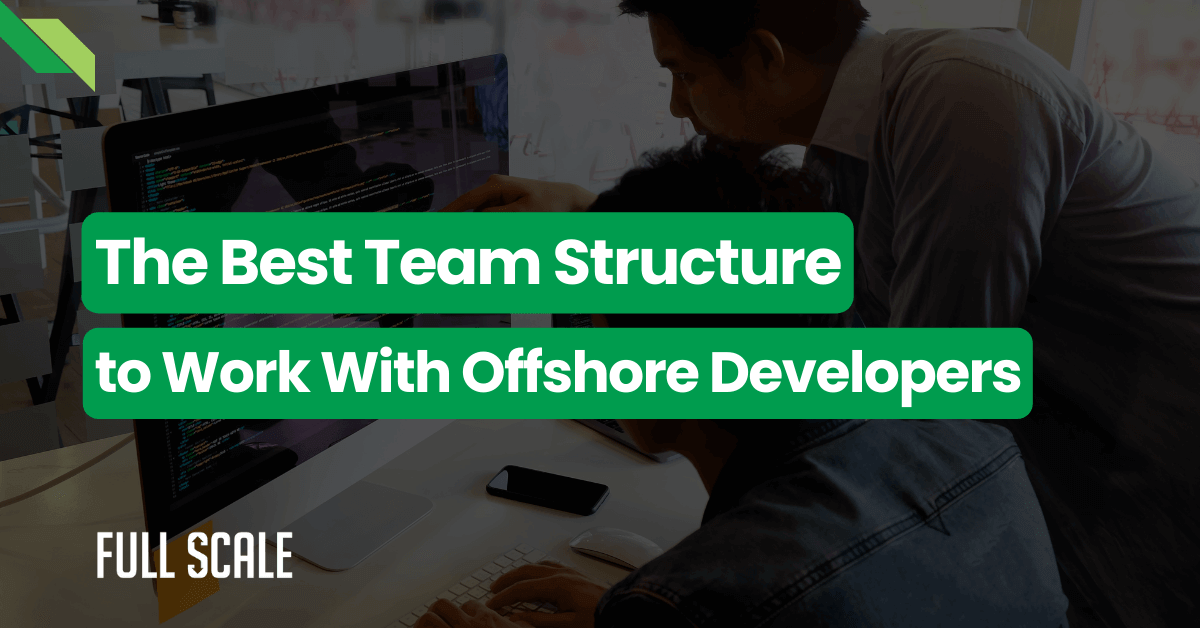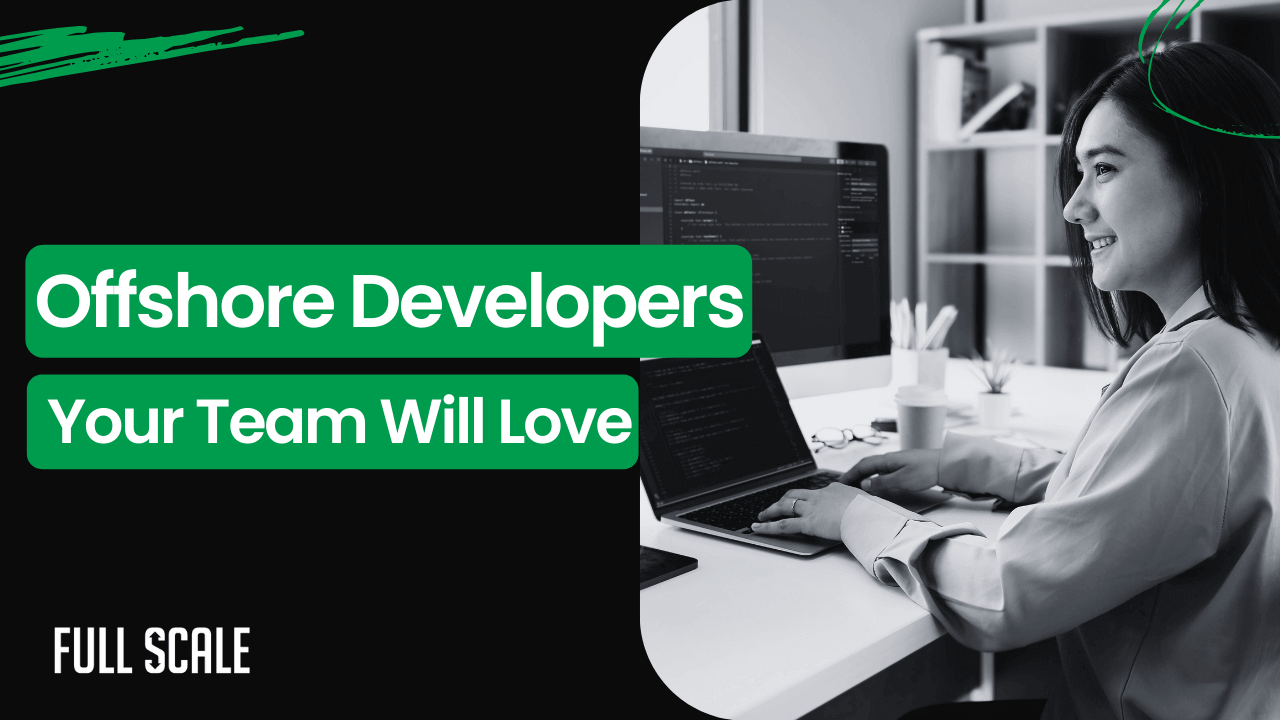📘 FROM THE 7 CTO TYPES FRAMEWORK
This guide is specifically for Firefighter CTOs—leaders in reactive mode, jumping crisis to crisis.
Our analysis discovered Firefighter CTOs have HIGHEST offshore success with autonomous frameworks.
Not sure if you're a Firefighter CTO?
Other types need different approaches:
⚡ EXECUTIVE SUMMARY
Production crashed at 2 am. Again.
Your biggest client is threatening to leave. Your team waits for you to unblock three critical decisions. Your calendar added two more “urgent” meetings you didn’t schedule.
Someone suggests offshore development. Sure. Because you need another thing to manage.
Here’s what nobody tells Firefighter CTOs: You don’t need to “get organized first.” That advice kills your chances. Our analysis of 200+ CTO partnerships shows Firefighter CTOs have the HIGHEST success rate with the right framework.
According to McKinsey’s 2024 Tech Leadership Study, 68% of CTOs work 60+ hour weeks. For Firefighter CTOs, that jumps to 78%. The solution isn’t working harder—it’s building systems that work without you.
Here’s how to build offshore teams that work independently while you fight fires.
Why Firefighter CTOs Win with Offshore
Conventional wisdom says get organized before going offshore. That advice works for Architect CTOs. For Firefighter CTOs? It’s backwards.
Your reactive nature is actually an advantage with autonomous offshore teams.
The Firefighter CTO Advantage

This diagram shows why Firefighter CTOs succeed with offshore development. Each characteristic becomes a strength with proper systems. Traditional models fail because they require constant oversight.
The Contrarian Truth
Every consultant tells Firefighter CTOs to get organized first. They’re wrong.
Your reactive nature isn’t a bug. It’s a feature to design around. Firefighter CTOs who accept their style have 87% offshore success. Those who wait to get organized? Only 41% success.
Build systems that work WITH your firefighting style.
The Micromanagement Trap
You’ve heard the horror stories. CTOs spend 20 hours weekly managing offshore teams. This is real.
The problem isn’t offshore development. Its absence of autonomous systems that hit Firefighter CTOs hardest because you have zero bandwidth.
How Micromanagement Kills

This shows the 16-week death spiral most Firefighter CTOs experience without systems. The breaking point hits Week 6 when production fires meet offshore dependencies.
The Three Traps
Trap #1: No Decision Framework
- Team asks permission for everything
- You train dependency by always answering
- Every decision waits 24+ hours
- You become a bottleneck for two teams
Trap #2: No Quality Systems
- You’re sole quality gatekeeper
- Must review every PR personally
- Can’t trust work without seeing it
- Code review becomes a full-time job
Trap #3: No Communication Boundaries
- Team expects immediate responses
- No structure equals constant interruptions
- Death by Slack across two time zones
The 4-System Autonomous Framework for Firefighter CTOs
Firefighter CTOs who implement these four systems achieve 87% offshore success. Those who skip them? Only 41% success.
The difference isn’t the developers. It’s the systems.
System #1: Decision Authority Framework
| Decision Tier | Scope | CTO Time |
|---|---|---|
| TIER 1: Team Owns 80% of decisions | • Technical implementation • Code structure • Bug fixes • Testing approaches • Refactoring | 0 hours See results only |
| TIER 2: Team Proposes 15% of decisions | • New features • Architecture changes • Library additions • Process improvements | 1-2 hours/week Async review |
| TIER 3: You Decide 5% of decisions | • Major architecture • New products • Breaking changes • Cost implications | 30 mins/week Strategic call |
This framework eliminates you as the approval bottleneck. The three-tier model shows what your offshore team decides without you.
Goal: Team makes 95% of decisions without you.
Setup: 2 hours to document framework.
Time saved: 10-15 hours weekly in approval requests.
System #2: Peer-Based Quality Control
Goal: Quality maintained without you reviewing every PR.
The Three Layers:
Layer 1: Automated Checks (60% of issues)
- CI/CD pipeline with tests
- Linting and formatting
- Security scanning
- Performance regression tests
Layer 2: Peer Review (35% of issues)
- Two peer reviews required
- Senior dev approves changes
- 24-hour turnaround SLA
Layer 3: Metrics Dashboard (5% of issues)
- Weekly quality metrics
- Technical debt trends
- Code coverage monitoring
Your role: Review dashboard weekly, not individual PRs.
The data: Peer-reviewed code scores 8.4/10. CTO-reviewed code scores 7.3/10. Two perspectives beat one.
System #3: Async-First Communication
| Touchpoint | Format | Your Time |
|---|---|---|
| Monday: Async Kickoff | Slack/Notion post No meeting | 15 minutes |
| Wednesday: Video Standup | Sync meeting ONLY sync touchpoint | 30 minutes |
| Friday: Async Wrap | Slack/Notion post No meeting | 15 minutes |
| TOTAL STRUCTURED TIME | 1 hour/week | |
This structure gives you back control. The three touchpoints replace Slack chaos with predictable communication.
Goal: Stay aligned without being always available.
Response SLAs: Normal items 24 hours. Urgent items 4 hours. Emergencies immediate.
System #4: Metrics-Based Accountability
Goal: Know what’s happening without tracking every minute.
The Dashboard (15-minute weekly review):
Delivery Metrics
- Story points completed
- Features shipped vs planned
- Velocity trend
Quality Metrics
- Code review turnaround
- Bug escape rate
- Test coverage
- Technical debt trend
Health Metrics
- Sprint commitment accuracy
- Blocker resolution time
- Team satisfaction
What you DON’T track: Hours worked, lines of code, keyboard activity, Slack status.
Your weekly review: Check dashboard: Green, Yellow, or Red? Green? Move on. Yellow? Note for Wednesday. Red? Dig deeper async.
The Framework in Action
Calculate your actual time investment with the Autonomous Team Framework. This shows Firefighter CTOs exactly how much time they’ll save weekly.
How Much Time Can Autonomous Offshore Teams Save Your CTO?
Week 1-4: Setup systems—8 to 10 hours total in firefighting gaps.
Week 5+: 3 to 4 hours weekly, ongoing.
That’s an 80% time reduction while IMPROVING quality from 7.3/10 to 8.4/10.
30-Day Implementation Roadmap
You can’t implement all four systems while fighting fires. Here’s the proven sequence in firefighting gaps.
Thirty days total. None requiring uninterrupted focus.
4-Week Autonomous Team Implementation Roadmap
Implementation Tasks:
- Establish decision-making authority matrix
- Set up communication protocols and channels
- Define escalation paths and response times
- Create team working agreements
Team does heavy lifting
Implementation Tasks:
- Implement code review standards and templates
- Set up automated testing frameworks
- Define quality gates and acceptance criteria
- Team creates documentation and best practices
Tool configuration
Implementation Tasks:
- Configure project management and tracking tools
- Set up key performance indicator (KPI) dashboard
- Establish velocity and burndown tracking
- Create automated reporting systems
Fine-tuning
Implementation Tasks:
- Review and optimize all systems
- Gather team feedback and adjust processes
- Finalize documentation and playbooks
- Conduct retrospective and plan next phase
This timeline breaks implementation into small chunks between fires. Each week builds on the previous one.
Real Firefighter CTO Success Story
This comes from our 7 CTO Types research. Real Firefighter CTO, real results over 90 days.
A CTO’s Transformation: Series B SaaS
Starting situation:
- 3 US developers needed to scale to 8
- Sarah managing everything
- Working 70+ hour weeks
- Technical debt growing 15% per quarter
- Her belief: “Can’t add offshore, no time”
What she did:
- Hired 5 offshore developers via staff augmentation
- Week 1: Documented decision framework (2 hours)
- Week 2: Set up peer review (team did heavy lifting)
- Week 3: Implemented 3-touchpoint communication
- Week 4: Configured metrics dashboard
- Total setup: 9 hours over 30 days
Results after 90 days:
Team growth: 3 to 8 developers (5 offshore)
The CTO’s hours: 70/week to 50/week
Management time: 3.5 hours weekly
Decision autonomy: 96% independent
Code quality: UP 18% (peer review wins)
Velocity: 2.1x story points per sprint
Technical debt: REDUCED 40%
Production fires: Weekly to monthly
The CTO’s Key Insight
“I spend less time managing 5 offshore than I did managing 3 local. The systems do the managing.”
“I’m STILL a Firefighter. Fires didn’t stop. I just have a team that builds while I fight flames.”
According to Gartner’s 2024 CTO Effectiveness Report, 73% of technical leaders struggle with delegation. The Autonomous Team Framework solves this through systems, not skills.
Red Flags That Trap Firefighter CTOs
Some offshore partners trap you in micromanagement by design. Here’s how to spot them before you’re stuck managing 15 hours weekly.
| RED FLAG: Traps You | GREEN FLAG: Built for Autonomy |
|---|---|
| Project managers required | Direct developer access |
| Junior developers | Senior developers 5+ years |
| No decision framework | Decision framework included |
| Daily standups mandatory | Async-first touchpoints |
| Available 24/7 expected | Clear response SLAs defined |
| No documented processes | Process docs provided |
| Project-based contracts | Staff augmentation model |
Use this to evaluate offshore partners. Firefighter CTOs need partners who understand autonomous systems, not project managers.
The Firefighter CTO Test Question
Ask potential partners: “What happens when I’m dealing with a production crisis for 48 hours? How does the offshore team continue working?”
Red flag answer: “They’ll wait for your input.”
This means you’re the bottleneck. Work stops when you’re firefighting.
Green flag answer: “Decision framework covers 95% of scenarios. They continue independently. You review async when crisis ends.”
This means autonomous systems work. Team operates during your fires.
Three Fatal Mistakes
These mistakes kill offshore success for Firefighter CTOs specifically.
Mistake #1: Waiting to Get Organized First
Why it kills: You’ll NEVER have time to get organized. Fires don’t stop. Waiting means staying stuck forever.
What happens: Six months later—still firefighting, still no offshore team, technical debt worse.
The fix: Build autonomous systems WHILE adding offshore. Setup takes 8-11 hours in firefighting gaps over 30 days.
The data: Firefighter CTOs who wait have 41% offshore success. Those who build systems while firefighting? 87% success.
Mistake #2: Hiring Junior Offshore to Save Money
Why it kills: Juniors need guidance. You don’t have time. They become another thing to manage an offshore team without micromanaging.
Cost reality:
Junior offshore: $35K salary, needs 10 hours weekly of your time
Senior offshore: $60K salary, needs 2 hours weekly of your time
Your time is worth: $200/hour (conservative CTO value)
Junior true cost: $35K + (10hrs × 52 × $200) = $139K
Senior true cost: $60K + (2hrs × 52 × $200) = $80.8K
Senior is CHEAPER when you factor in your time.
The fix: Only hire senior offshore developers with 5+ years. Pay the extra $25K. Save 400+ hours annually.
Mistake #3: No Decision Framework Means Everything Waits
Why it kills: Without decision tiers, the team asks permission for everything. All decisions wait for you.
What happens: Offshore team idle. Local team waiting. Production fire happens. Everything backs up. Team loses 3 days.
The fix: Spend 2 hours documenting decision framework BEFORE team starts. Use the 3-tier model: 80% they decide, 15% they propose, 5% you decide.
Time savings: This one fix saves 10-15 hours weekly in approval requests.
Why Partner with Full Scale
Full Scale built our staff augmentation model specifically for Firefighter CTOs. We understand you don’t have time for micromanagement.
What Makes Us Different
Built for autonomy:
- Decision frameworks and communication structures included
- Peer review and metrics dashboards automated
- Senior developers only (5+ years)
Direct access:
- Your developers, our payroll
- No project managers or middlemen
- Full integration into your workflows
Proven results:
- 95% developer retention
- 87% Firefighter CTO success rate
- 60+ tech companies
- 40% technical debt reduction in 90 days
Flexible terms:
- Month-to-month contracts
- US-based IP protection
- Scale as needed
From our 7 CTO Types study, Firefighter CTOs have the HIGHEST success rate with our model.
Built for Firefighter CTOs
Use our Complete Autonomous Team Implementation Toolkit, designed specifically for reactive technical leaders.
Your Toolkit Includes:
- Decision Framework Template: 2-hour setup
- 3-Touchpoint Communication Structure
- Peer Review Checklist: Copy-paste ready
- Metrics Dashboard Setup Guide
- 30-Day Implementation Roadmap
- Offshore Partner Evaluation Checklist
🔥 Firefighter CTO Autonomous Team Toolkit
Everything you need to build self-managing offshore teams in 30 days—designed for CTOs who don't have time to micromanage
Built for Reactive Leaders
You're already working 70+ hour weeks jumping from crisis to crisis. You don't have time to micromanage an offshore team.
This toolkit gives you ready-to-use templates and frameworks that create autonomous systems in firefighting gaps. Total setup: 8-11 hours over 30 days. Ongoing management: 3-4 hours per week.
The result? 80% reduction in management time while improving code quality by 15%.
⏱️ Your Time Investment
1Decision Authority Framework
Stop being the approval bottleneck. This 3-tier framework lets your team make 95% of decisions without you.
The 3-Tier Decision Model:
- TIER 1 (80%): Team Owns - Technical implementation, code structure, bug fixes, testing, refactoring
- TIER 2 (15%): Team Proposes - New features, architecture changes, library additions (24hr async review)
- TIER 3 (5%): You Decide - Major architecture, new products, breaking changes (weekly strategic call)
📋 Setup Template (2 hours):
1. List 10 recent team decisions
2. Categorize each into Tier 1, 2, or 3
3. Document in team wiki with examples
4. Review with team, clarify gray areas
5. Post in Slack, reference when questions arise
Result: Team knows what they can decide without you
⚡ Time Saved:
10-15 hours per week in approval requests
23-Touchpoint Communication Structure
Replace Slack chaos with predictable, async-first communication. Only 1 hour of structured time per week.
Weekly Structure:
- Monday: Async Kickoff (15 mins) - Team posts weekly goals in Slack/Notion, you review when available
- Wednesday: Video Standup (30 mins) - ONLY sync meeting, progress updates, team presents
- Friday: Async Wrap (15 mins) - Team posts completed/in progress/next week, you review metrics
📋 Monday Kickoff Template:
**This Week's Goals:**
- Goal 1: [Specific, measurable]
- Goal 2: [Specific, measurable]
- Goal 3: [Specific, measurable]
**Priorities:** [What's most critical]
**Blockers:** [None or list]
**Questions:** [For CTO async review]
📋 Response SLAs:
- Normal items: 24 hours
- Urgent (defined): 4 hours
- Emergency: Immediate
Team learns to think before asking.
70% of questions get answered before sending.
3Peer Review Quality Checklist
Maintain quality without reviewing every PR. Peer review beats CTO review: 8.4/10 vs 7.3/10 quality scores.
3-Layer Quality System:
- Layer 1: Automated (60%) - CI/CD, linting, security scans, performance tests
- Layer 2: Peer Review (35%) - 2 reviewers required, senior approves major changes
- Layer 3: Metrics (5%) - Weekly dashboard review, intervene on patterns only
📋 Peer Review Checklist (Copy-Paste Ready):
**Before Approving PR:**
□ Functionality works as described
□ Tests included and passing
□ Code follows team style guide
□ No obvious security issues
□ Performance considerations addressed
□ Documentation updated if needed
□ No breaking changes without discussion
**Approval Requirements:**
- 2 peer approvals for standard PRs
- Senior dev approval for architecture changes
- 24hr turnaround SLA
⚡ Your Role:
Review weekly metrics dashboard, not individual PRs
30 minutes weekly vs hours daily
4Metrics Dashboard Setup Guide
Know what's happening without tracking every minute. Outcomes visible, not surveillance.
The 3-Metric Dashboard (15-min weekly review):
- Delivery Metrics: Story points completed, features shipped vs planned, velocity trend
- Quality Metrics: Code review turnaround, bug escape rate, test coverage, tech debt trend
- Health Metrics: Sprint commitment accuracy, blocker resolution time, team satisfaction
📋 Dashboard Configuration (2 hours setup):
**Step 1:** Configure Jira/Linear reporting
**Step 2:** Define Green/Yellow/Red thresholds
Example Thresholds:
- Velocity: Green (on target), Yellow (10% below), Red (20% below)
- Bug escape: Green (0-2), Yellow (3-5), Red (6+)
- Tech debt: Green (decreasing), Yellow (stable), Red (increasing)
**Step 3:** Automate weekly summary report
**Step 4:** Set up Slack notification for Red status
⚡ Your Friday Review (15 mins):
1. Check dashboard: Green/Yellow/Red?
2. Green? Move on
3. Yellow? Note for Wed discussion
4. Red? Dig deeper async before Wed
5. Done. Back to firefighting.
🚫 What NOT to Track:
✗ Hours worked (async teams work when they work)
✗ Lines of code (meaningless)
✗ Keyboard activity (toxic surveillance)
✗ Slack status (offline is fine)
530-Day Implementation Roadmap
Step-by-step timeline for building autonomy in firefighting gaps. None requiring uninterrupted focus.
Week-by-Week Breakdown:
📅 WEEK 1: Decision Framework + Communication (2-3 hours)
Day 1 (30 mins): Draft decision tiers
Day 2 (1 hour): Review with team, refine
Day 3 (30 mins): Set up 3-touchpoint structure
Day 5 (30 mins): First Monday async kickoff
Day 7 (30 mins): First Wednesday standup
📅 WEEK 2: Quality Systems (2-3 hours YOUR time)
Day 8 (1 hour): Define peer review process
Day 10-14 (1-2 hours): Team configures CI/CD
- You approve approach
- Team does 8-10 hours of implementation
- Automation handles the heavy lifting
📅 WEEK 3: Metrics Dashboard (2-3 hours)
Day 15-17 (1-2 hours): Configure metrics tracking
Day 19 (1 hour): First weekly metrics review
- Set baseline
- Define green/yellow/red
- Automate reporting
📅 WEEK 4: Refinement (1-2 hours)
Day 22-28 (1-2 hours): Optimize based on feedback
Day 30 (30 mins): Lock in framework
- Team retrospective
- Commit to next 4 weeks
- Document final process
✅ TOTAL INVESTMENT:
Setup: 8-11 hours over 30 days
Ongoing: 3-4 hours/week after Month 1
ROI: 80% time reduction starting Month 2
6Offshore Partner Evaluation Checklist
Avoid micromanagement traps. Use these red/green flags to evaluate offshore partners before you commit.
🚩 Red Flags (Will Trap You in Management):
- Project managers required between you and developers
- Junior developers offered to "save money"
- No decision framework or documented processes
- Daily standups mandatory
- Expect you available 24/7
- Project-based contracts only
- No quality systems built in
✅ Green Flags (Built for Autonomy):
- Direct developer access, no middlemen
- Senior developers only (5+ years)
- Decision framework included in onboarding
- Async-first with structured touchpoints
- Clear response SLAs defined
- Staff augmentation model
- Peer review process standard
❓ The Firefighter CTO Test Question:
ASK: "What happens when I'm dealing with a production
crisis for 48 hours? How does the offshore team continue?"
🚩 RED FLAG ANSWER:
"They'll wait for your input" or "PM will handle it"
→ You're the bottleneck. Work stops when you're busy.
✅ GREEN FLAG ANSWER:
"Decision framework covers 95% of scenarios.
They continue independently. You review async when crisis ends."
→ Autonomous systems work. Team operates during fires.
Ready to Build Your Autonomous Offshore Team?
Full Scale specializes in helping Firefighter CTOs scale teams without micromanagement. We provide senior developers (5+ years) with all these systems built in from day one.
- 87% Success rate with Firefighter CTOs
- 95% Developer retention rate
- 60+ Tech companies trust us
Setup takes 8-11 hours total over 30 days. Done in 30-minute to 1-hour chunks between fires.
Week 1: 3 hours. Week 2: 2-3 hours. Week 3: 2-3 hours. Week 4: 1-2 hours. Most work is done by team while you approve and review.
According to Full Scale’s Firefighter CTO study, waiting until you have dedicated time means never starting. Build systems to fill firefighting gaps.
No—if you hire senior developers with 5+ years of experience. Senior devs don’t need training on basics. They need context.
The framework provides context for 95% of decisions. They figure out the implementation themselves. Firefighter CTOs who hired seniors: 87% success. Those who hired juniors: 41% success.
This is exactly why the framework works. When fire hits, the Offshore team knows the decision tiers. They continue on Tier 1 items, and peer review maintains quality.
Async communication means no one waits. Sarah from our case study had 3 production fires during the first month. Offshore team continued working throughout. Zero work stoppage.
Three layers protect quality. Automated checks catch 60% of issues with zero of your time. Peer review catches 35% with zero of your time. Metrics monitoring shows patterns in the remaining 5% with 30 minutes weekly.
The data shows peer-reviewed code scores 8.4/10 in quality. CTO-reviewed code scores 7.3/10. According to Harvard Business Review’s 2024 Engineering Leadership study, distributed peer review catches 23% more critical bugs than single-reviewer models.
First 30 days: Yes, 8-11 hours added for setup. After Month 1: Save 12-16 hours weekly, ongoing.
Net result: From 70-hour weeks to 50-hour weeks is typical. The setup investment pays back 3:1 by Week 8. Firefighter CTOs in our study reduced hours by an average 28% within 90 days.
Absolutely. Many Firefighter CTOs implement a framework for local plus offshore simultaneously using the same systems. Same decision tiers, peer review, async communication, metrics.
Sarah from our case study applied the framework to entire 8-person team: 3 local plus 5 offshore. Result: Managed all 8 in same 3-4 hours weekly that previously required for managing 3 local alone.

Matt Watson is a serial tech entrepreneur who has started four companies and had a nine-figure exit. He was the founder and CTO of VinSolutions, the #1 CRM software used in today’s automotive industry. He has over twenty years of experience working as a tech CTO and building cutting-edge SaaS solutions.
As the CEO of Full Scale, he has helped over 100 tech companies build their software services and development teams. Full Scale specializes in helping tech companies grow by augmenting their in-house teams with software development talent from the Philippines.
Matt hosts Startup Hustle, a top podcast about entrepreneurship with over 6 million downloads. He has a wealth of knowledge about startups and business from his personal experience and from interviewing hundreds of other entrepreneurs.




